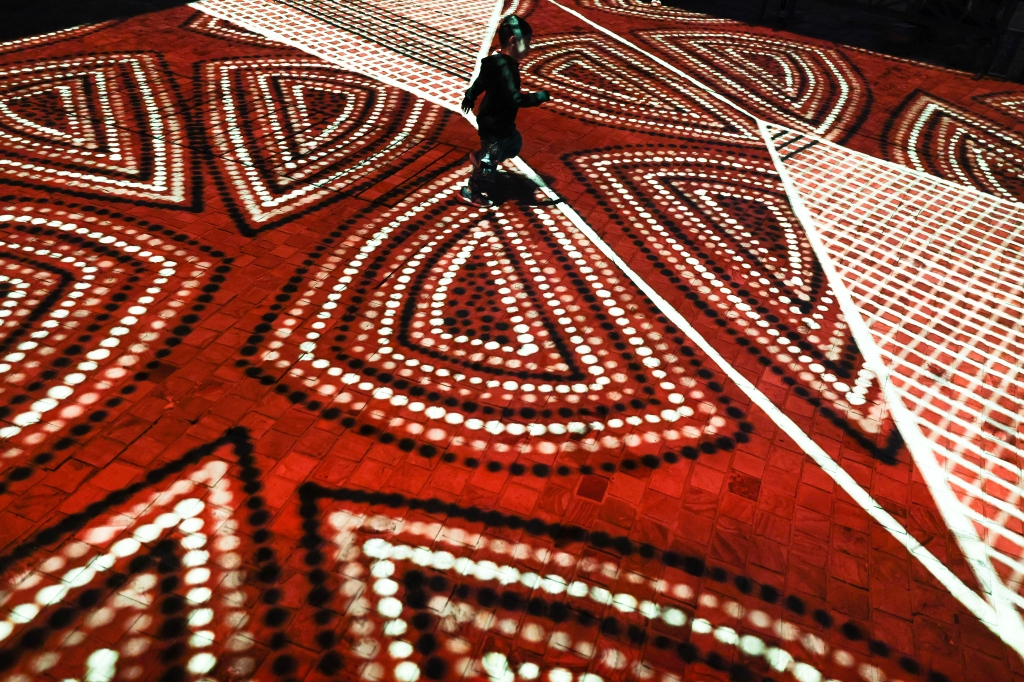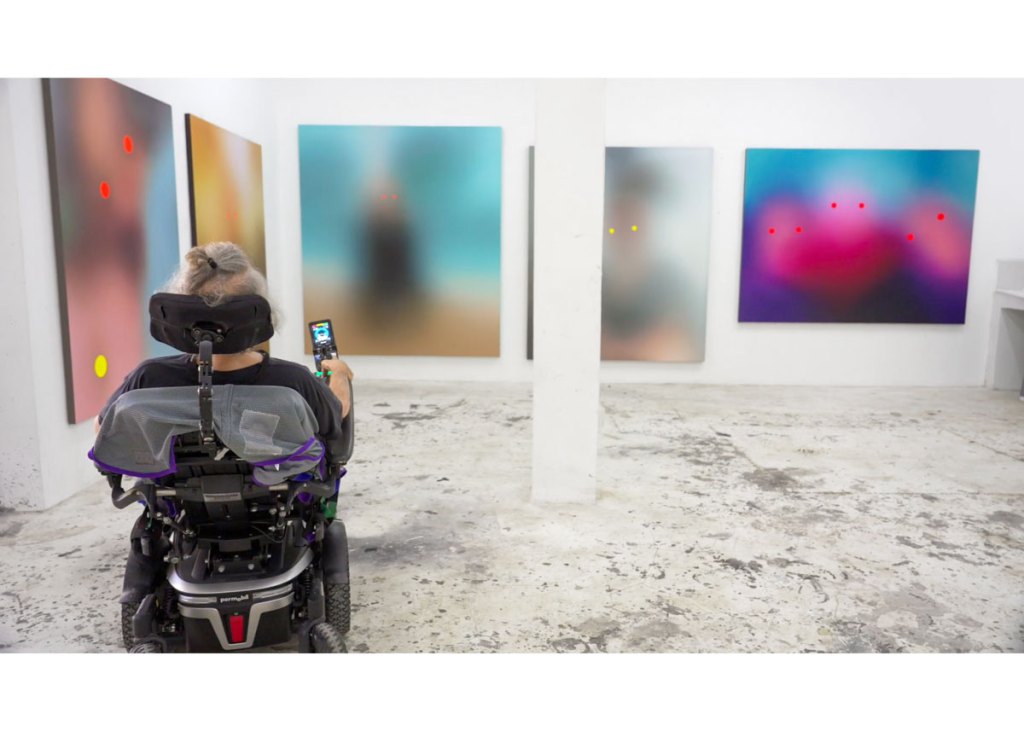
At Event, Critic Jerry Saltz Talks Astral Projection, His Instagram Habit, and the Size of the Art World
On Thursday night at T.J. Byrnes, an Irish pub in lower Manhattan, art criticism’s anti-hero Jerry Saltz sat—and stood, and paced, and waved his arms around—in front of a tightly packed room of superfans and skeptics for a conversation with the writer and columnist Dean Kissick, the ninth such talk organized by the Peric Collection.
The tables in the back room were pushed up against the wall to make way for a few dozen folding chairs. All but two were filled—reserved for a couple of VIPs—with a crowd ranging from young Dimes Squarescenesters in oversized plaid pants and ’70s-era glasses to forty-something internet-famous artists sporting basketball jerseys. The crowd was the biggest and most diverse of the Seaport Talks so far, Matt Moravec, organizer of the Peric Collection and the event, told ARTnews later in the night. After all, Saltz isn’t your average talking head.
As the Pulitzer Prize-winning senior art critic and columnist for New York magazine, the 72-year-old writer has clout inside and out of the white cube. The talk was ostensibly about Saltz’s book Art Is Life: Icons and Iconoclasts, Visionaries and Vigilantes, and Flashes of Hope in the Night, a collection of his work released a year ago. Why so late? Well, Saltz is busy. He sees around 30 shows a week with his equally famous art critic wife, Robera Smith, and he posts on social media with the verve of a teenager.
Saltz arrived, decked out in Lululemon, an extra-large Dunkin Donuts coffee in one hand and a boxes of donuts in the other. He passed out the boxes to the crowd and mugged for photos with his coffee.
“Thank you for coming out, Jerry, and thank you for getting back to me after the 12th email,” Kissick said before he summed up Saltz’s career during his introduction. “I didn’t see the first 11!” Saltz said, hands up in the air in an i dunno gesture. “Then I saw the 12th and I wrote it off. I’m an old man. This is too cool for me.” When Kissick gently accused Saltz of ghosting his DMs, Saltz whipped back. “I get 35,000 DMs a day. Goodbye! Have I ever answered anyone here?” Applause sprung from the crowd. “Damn right. Damn right. I’m looking!” Saltz said.
Over the course of an hour, Saltz and Kissick spoke about the critic’s deep affection for Jasper Johns, gardens in Berlin, and two out-of-body experiences: a bout of astral projection and his social media alter-ego. It’s that alter-ego who Saltz sometimes thinks the young audience has come to see and who queues up for selfies.
“You’re a very online art critic, and I think social media has played a big role in bringing you to this whole other level that critics don’t usually inhabit,” Kissick said. Do you ever experience the sublime on instagram the way you do when you see a Jackson Pollock?”
“Well, yes, I do,” Saltz said. “My second self has become, and this is tragic, but it’s true … my second self is very, he’s wild. You see how he behaves online.” The crowd laughs. “I’m shocked at his behavior. My wife is regularly shocked. But that person is more capable of communicating with more people at more times than I found available to me as an art critic. The game I got into online was a pyramid scheme. The one talking to the many. I can’t write that way. I used to try but it wasn’t my voice.”
Then Saltz went on to speak in a parody of the overly academic, jargonized MFA speak that haunts much of criticism, along with gallery labels and art dealer speak. “The commodified object of late capitalism finds itself lost in a haptic space, caught between nature and culture. That dichotomy,” he said. “I would go on and on.”
Saltz said he used to write in that mode early in his career and gained recognition for it, but as he matured, he dropped the habit. It wasn’t his own voice. it felt false.
As the talk progressed Saltz outlined his daily routine (“I wake up in an utter panic, totally fucking terrified that I have to write today”) and how he navigates Instagram (“I don’t know how it works. I just scroll like mad and take screen grabs of things I find convincing. I don’t necessarily like everything I post, but it has a momentary relevance for me”). He touched on the state of art criticism, which he believes in “on pause.”
“The point is that whatever criticism there is today is at your service, at the service of the artist. I won’t complain about that. There’s hardly any criticism because there’s nary a negative word out there. The only negative things came from my late friend Peter Schjeldahl, who recently passed away, and you have me … and, listen, I will never punch down at an artist because of my own scale, and of course, the best critic alive, my wife, the art critic Roberta Smith. She will write what she thinks. It may not be of interest to you. And my loves, that’s fine.”
Yes, there’s a lot of mediocrity out there, he said, “85% of shows are garbage,” but that’s fine. It’s always been that way. And that low percentage, for him, doesn’t mean you should stop going to shows, whether they’re at in a small basement in Greenpoint or at the megas, which he cheekily compared to Fyre Festival, the infamous 2017 luxury music event that turned into a viral disaster.
During the Q&A, which Saltz continuously said he’d happily extend all night, Casey Gleghorn from No Gallery asked why his print stories were reserved for famous folks like Jim Carrey and emerging or boundary-pushing artists only show up on his Instagram.
“We all get your meaning, and believe me, I wish that I could do that. That’s entirely on me and has nothing to do with my editors. But that’s not my scale, I’m sorry,” he responded. Then he added that, while he does write smaller reviews for the print magazine, “you shouldn’t want a 72-year-old critic to cover your shows anyways. You can’t trust someone that old.”
Ultimately, Saltz said, he likes all kinds of art, good, bad, and gimmicky.
“I wrote about the worst person alive, George W. Bush, because I found him making painting of himself naked in a bathtub strangely compelling. I’m going to interview Sharon Stone live on stage because I can see she’s trying to find her voice. Will I say she’s good? I will not. But I will say she seems to be a force of nature because of what she’s been through,” he said. “But I believe in a wide, wide, wide art world. The small one is fine. If you want a small one, you’ve got one. But that’s not my art world.”



